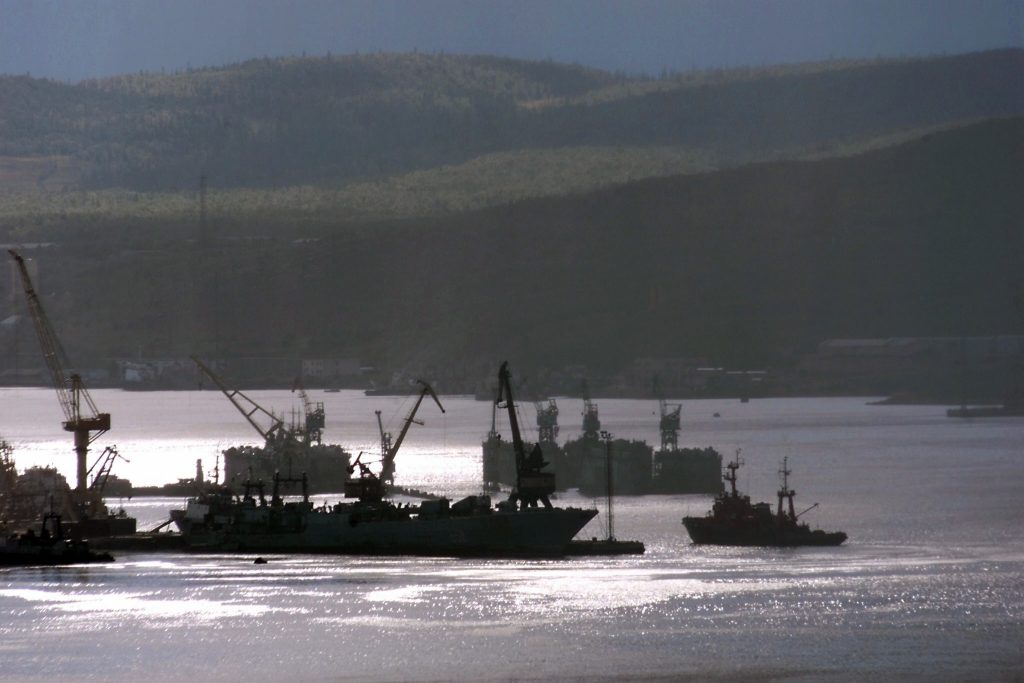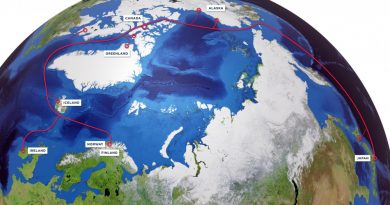Declining interest in Northern Sea Route

Interest from international ship operators in utilizing the Northern Sea Route has waned in recent years, according to a new report.
Despite Russian aspirations to make the shortcut between Asia and Europe a competitor to the traditional route through the Suez Canal, a sharp decline in transit shipping via the path in the past two years indicates a loss of interest from international shippers, Platts writes in a report.
Navigation via the Northern Sea Route (NSR) has been growing rapidly since 2010, when Novatek sent an Aframax tanker with stable condensate from Murmansk to China’s Ningbo Port in 22 days, around half the time of the traditional route through the Suez Canal.
Transit cargoes hit a record high in 2012 of 1.262 million tons.
International traffic on NSR began to decline in 2014, falling a three-quarter year on year to a little more than 274,100 tons. In 2015 transited cargos declined by another 86 percent to under 40,000 tons.
Russia is now developing the passage with the intention of increasing crude oil and liquefied natural gas deliveries from fields and port in the Russian Arctic to international markets.
NSR drawbacks
International market participants point to multiple challenges of the route, including harsh and unpredictable climate conditions and high ecological risks, among others.
Norway’s Statoil, for example, seems to have lost interest in the route, after sending several tankers, including cargoes of naphtha and LNG, to Japan in previous years.
“Statoil has not used the Northern route since 2013 and we currently have no plans to use it,” a company spokeswoman told Platts.
She declined to say what considerations were behind this but said that a decision on which route to sail depends on a number of factors. “Firstly, the waters need to be safe both as far as the vessel, the cargo and the environment are concerned. Secondly, any route we use needs to be commercially attractive and competitive against the alternatives,” she said.
“The attractiveness of a route depends on direct costs, and sailing time as well as the market characteristics of the respective commodities at the time of sailing,” she added without elaborating further.
Russia’s Gazprom Neft, which is developing two oil fields in the Arctic and also tested the route in 2012, said the limited navigation period as well as the need to use the ice-breaking escort and convoys offset the route’s advantages such as cheaper freight payments and shorter delivery time.
One of the key benefits of the route, from a cost perspective, is a reduced sailing time meaning a potentially significant saving in bunker costs. However within the last two years bunker prices have fallen substantially, meaning those potential savings would be similarly reduced.
Domestic shipments up
The dramatic drop in transit sailing via the NSR does not spell an end to the ambitious project to develop the NSR into a well-established shipping route, Platts’ report reads.
Domestic cargo turnover in the area jumped 37% year on year to 5.3 million tons in 2015, supported by accelerated work on the construction of the Yamal LNG plant and the nearby port of Sabetta.
Growing crude production from Gazprom Neft’s onshore Novy Port and offshore Prirazlomnoye also added to the 2015 traffic rise and is to play an increasing role in the future.
Earlier this month, Gazprom Neft received its first Arc7 class tankerwith a deadweight of 38,000 tons, capable of navigating through 1.8 meter-thick ice without ice-breakers. The company plans to build a total of six such tankers, together with the company Sovcomflot, to secure year-round delivery of around 450,000 tons of crude oil from Novy Port.
As part of the Arctic logistic scheme, Gazprom Neft in February launched a 300,000 tonsfloating storage vessel Umba in the Kola Bay, capable of loading two tankers simultaneously. It allows the delivery of Novy Port and Prirazlomnoye crude to international markets in standard export batches.
The expected launch of the first 5.5 million tons per year train at Yamal LNG in 2017 will also help to boost hydrocarbons cargo delivery through the NSR, with the cargoes expected to travel both east- and westward from Sabetta.
Related stories from around the North:
Asia: Asia ahead on preparing for polar climate change, says U.S. Arctic rep, Eye on the Arctic
Canada: Canada to collect more data for continental shelf claim, Eye on the Arctic
China: Chinese company mulls more Arctic shipping, Barents Observer
Iceland: Germany, Iceland cooperate on new transpolar port, Barents Observer
Norway: Arctic shipping -The myths, the realities & the challenges ahead, Eye on the Arctic
Russia: NSR – Twinned development of shipping, oil, Cryopolitics
Sweden: Swedish icebreakers gear up for Arctic role, Radio Sweden
Norway: How satellites are changing what we know, and can do, in the Arctic, Eye on the Arctic
United States: Arctic no shipping rival to Suez: expert, Alaska Public Radio Network



